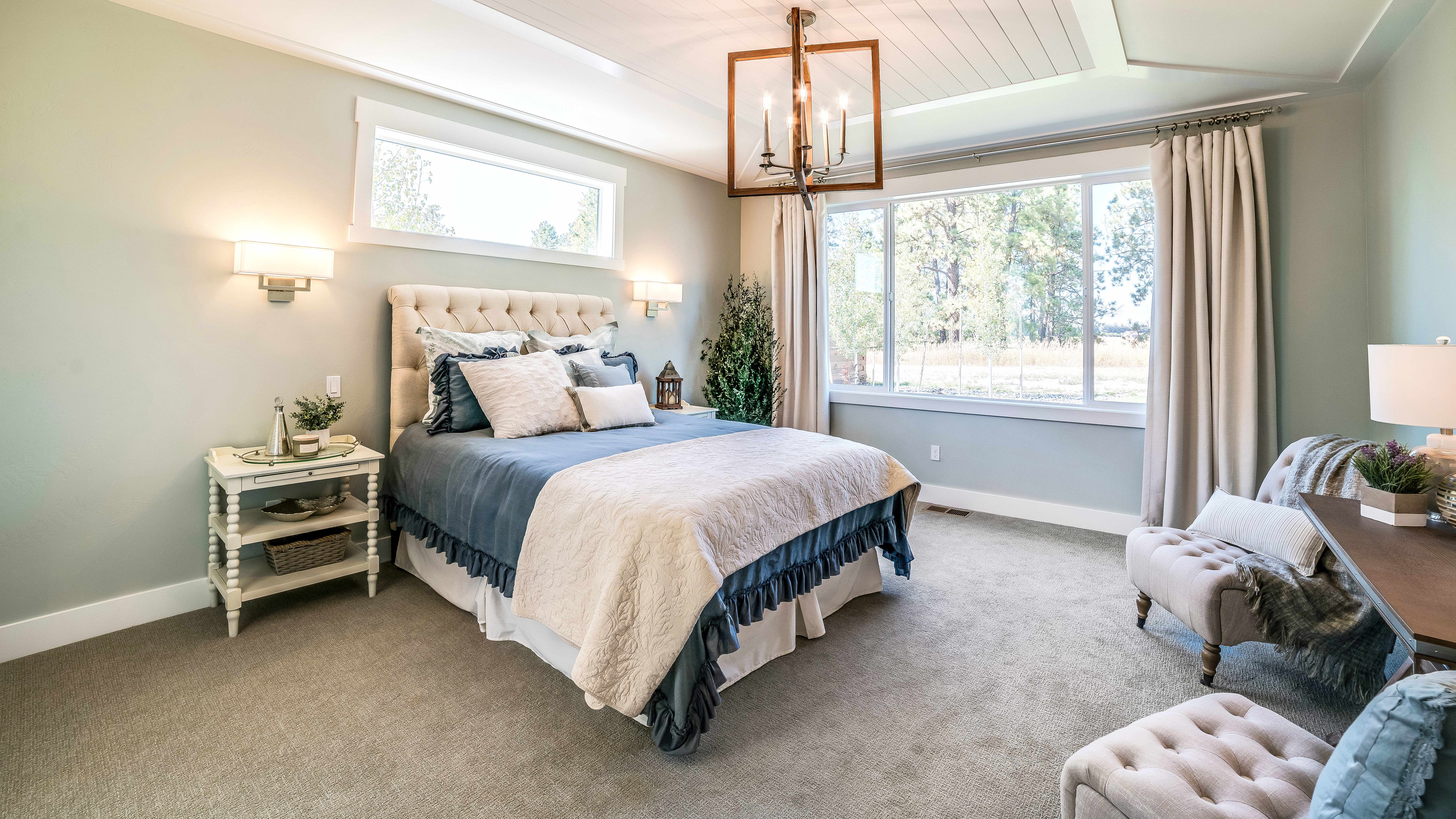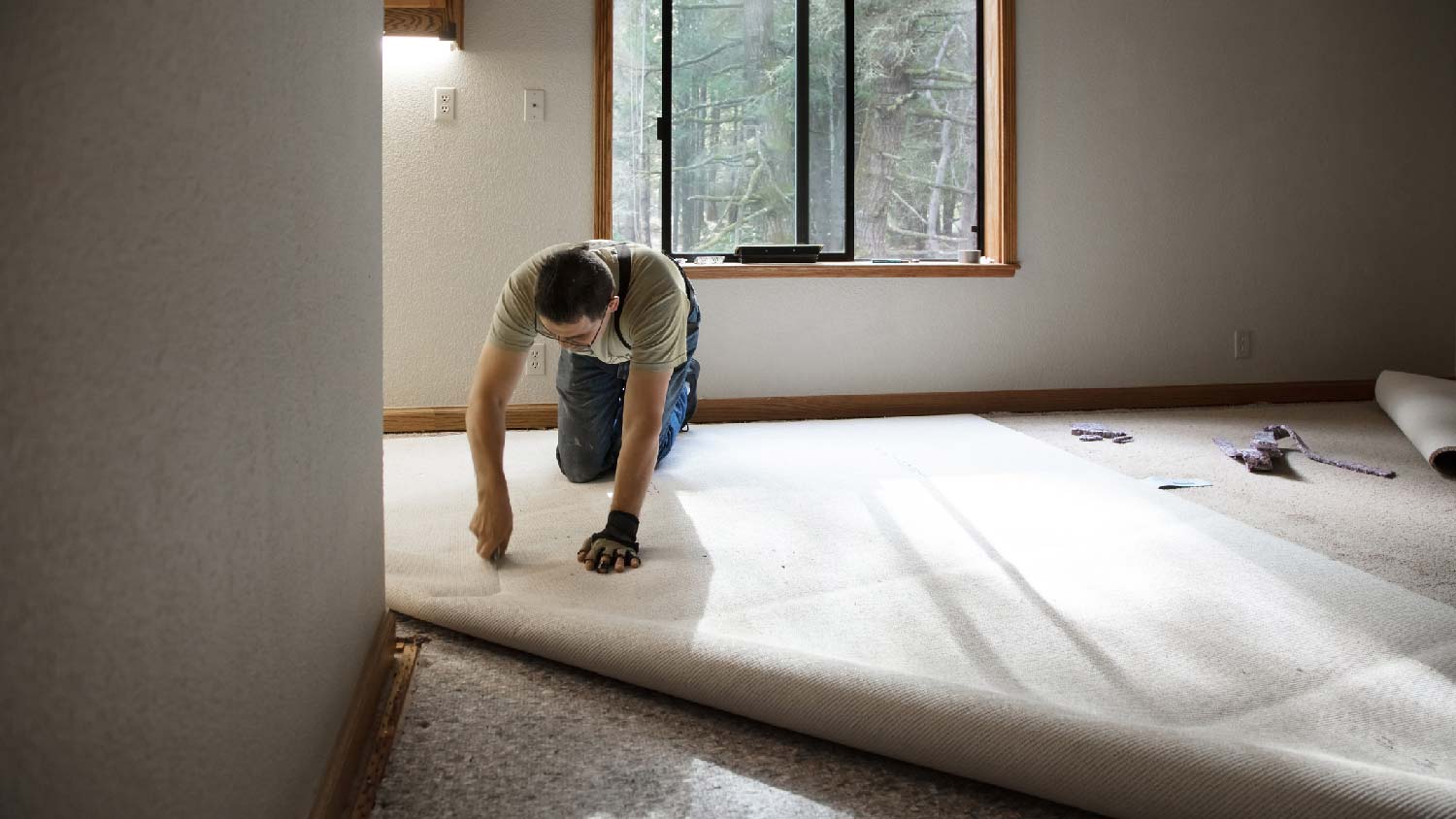
Get a clear estimate for carpet repair cost. Learn what impacts pricing, compare repair types, and find ways to save on your next carpet project.
Don’t be floored by your carpet replacement project


The amount of carpet you need for your project depends on the room size and shape.
The calculation will vary depending on whether the room is regular or irregular in shape.
A carpet installer can measure your home to determine the exact amount you need.
Carpet adds comfort and style to a room and can help muffle noises in the home. If your home needs new carpet, you’ll need to know how much you need to help make your carpet installation go smoothly. This carpet calculator will help you determine exactly how much carpet you need for your project so you’re not caught short.
The amount of carpet you need depends on the room size. Here are some typical room sizes and the approximate amount of carpet required for each.
| Room | Average Size in Feet | Amount of Carpet Needed in Square Feet |
|---|---|---|
| Living room | 12x18 | 238 |
| Dining room | 14x10 | 154 |
| Bedroom | 11x12 | 146 |
| Hallway | 3 1/2x4 | 16 |
| Home office | 8x8 | 71 |
To determine the amount of carpet you need, measure the length and width of your room. Then, plug the numbers into the following equation:
Amount of Carpet = [Room Length x Room Width] x 10%
This formula adds 10% to the calculation for overage, which allows you to make mistakes during installation without worrying that you’ll run out of material.

Measuring for carpet can be simple or complicated, depending on the room's shape and whether you’re installing the carpet on the stairs.
Measuring a square or rectangular room for carpet is straightforward because you don’t have to account for unusually shaped areas. Here’s how to measure a basic room for carpet:
Measure the length of the room from one wall to the other.
Measure the width of the room from one wall to the other.
Multiply the room’s length by its width.
Multiply that number by 1.1 to account for 10% overage.
For example, if your room measures 10 feet long and 12 feet wide, the total area is 120 square feet. You’ll multiply that by 1.1 to get a total carpet requirement of 132 square feet.
Carpet installation costs around $800 to $3,000, depending on the type of carpet and the area of the room. If you’re torn between low-pile and high-pile carpet, consider the room, your comfort needs, and the level of foot traffic in the area.
If your room isn’t a perfect square or rectangle, measuring for carpet is a little more complicated. However, it’s doable if you follow these steps:
Divide the room into two or more areas.
Measure the length and width of each area.
Multiply the length and width of each area.
Add all area sizes together.
Multiply that number by 1.1 to account for 10% overage.
For example, if your room has an alcove, you could divide it into two areas measuring 8 feet by 10 feet and 4 feet by 4 feet. The two areas measure 80 square feet and 16 square feet, respectively. Together, they measure a total of 96 square feet. Multiply that number by 1.1 to get 105.6 square feet, rounded up to 106 square feet (including overage).
Measuring stairs for carpet can be trickier than measuring a room. Here’s how to do it properly:
Measure the rise (height) and run (length) in inches of each stair.
Add the rise and run together, then add an extra inch to account for overage.
Multiply the stair measurement by the number of stairs.
Divide by 12 to convert the measurement to feet.
Measure the width of the stairs, rounding up to the nearest foot.
Multiply the length and width of the stairs to find the area.
For example, if your stairs have a 7-inch rise and an 11-inch run, you’d add them together, then add an extra inch to get 19 inches. If you have 13 stairs, you’d multiply 13 by 19 to get 247 inches, which equals 20.6 feet. If the width of the stairs is 3 feet, you’d multiply 21 by 3 for a total area of 60 square feet for carpeting.
Carpeting stairs costs between $400 and $800, depending on the number of stairs and the type of carpet you choose.
Installing carpet can be a DIY project if you have done it before and the room is a regular size and shape. However, in many cases, it’s best to hire a local carpet installation company to measure the installation area properly and lay the carpet professionally. You may also be able to find a contractor or handyperson who installs carpet; this option allows you to buy the carpet yourself and pay for installation, rather than being required to purchase it from your installer.
From average costs to expert advice, get all the answers you need to get your job done.

Get a clear estimate for carpet repair cost. Learn what impacts pricing, compare repair types, and find ways to save on your next carpet project.

Carpet padding makes your carpet feel extra comfortable and protects your floors from damage, but how much does carpet padding cost? Let’s look at the numbers.

Discover how much carpet replacement costs based on factors like the project size, the carpet material, and the labor required.

Sticky situations are no match for a DIYer armed with our guide on how to remove glued carpet. Skip the struggle and say hello to refreshed floors.

Between wool versus nylon carpet, which should you choose? Your carpet will be under your feet for years to come, so picking the right material is crucial.

Carpet padding helps the carpet last longer and makes it more comfortable, among other benefits. If you’re wondering whether you need carpet padding, we have answers.